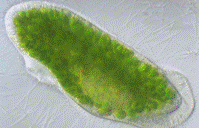Biological Sciences, School of

School of Biological Sciences: Faculty Publications
Document Type
Article
Date of this Version
2006
Abstract
Many species of insects display dispersing and nondispersing morphs. Among these, aphids are one of the best examples of taxa that have evolved specialized morphs for dispersal versus reproduction. The dispersing morphs typically possess a full set of wings as well as a sensory and reproductive physiology that is adapted to flight and reproducing in a new location. In contrast, the nondispersing morphs are wingless and show adaptations to maximize fecundity. In this review, we provide an overview of the major features of the aphid wing dimorphism. We first provide a description of the dimorphism and an overview of its phylogenetic distribution. We then review what is known about the mechanisms underlying the dimorphism and end by discussing its evolutionary aspects.


Comments
Published in Heredity (2006) 97: 192-199. Copyright 2006, Nature Publishing Group. http://www.nature.com/hdy. doi:10.1038/sj.hdy.6800863. Published online July 5, 2006. Used by permission. Also available at http://hal.archives-ouvertes.fr/hal-00090840/en/